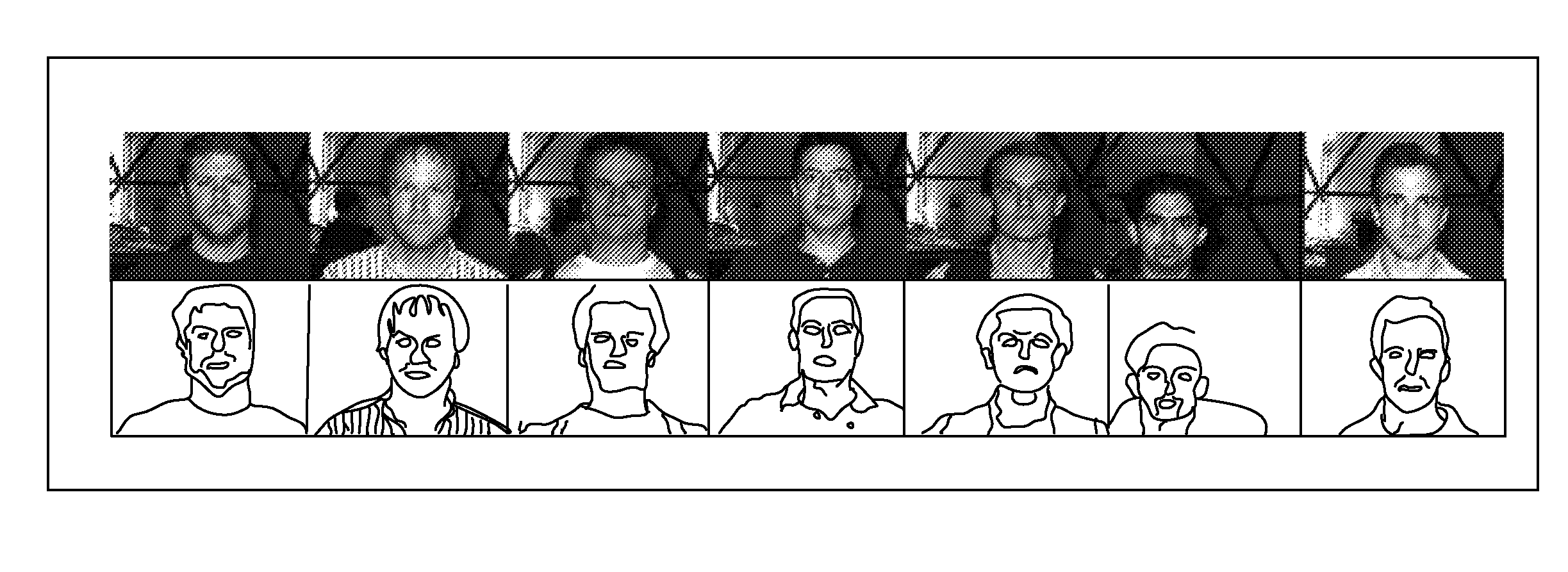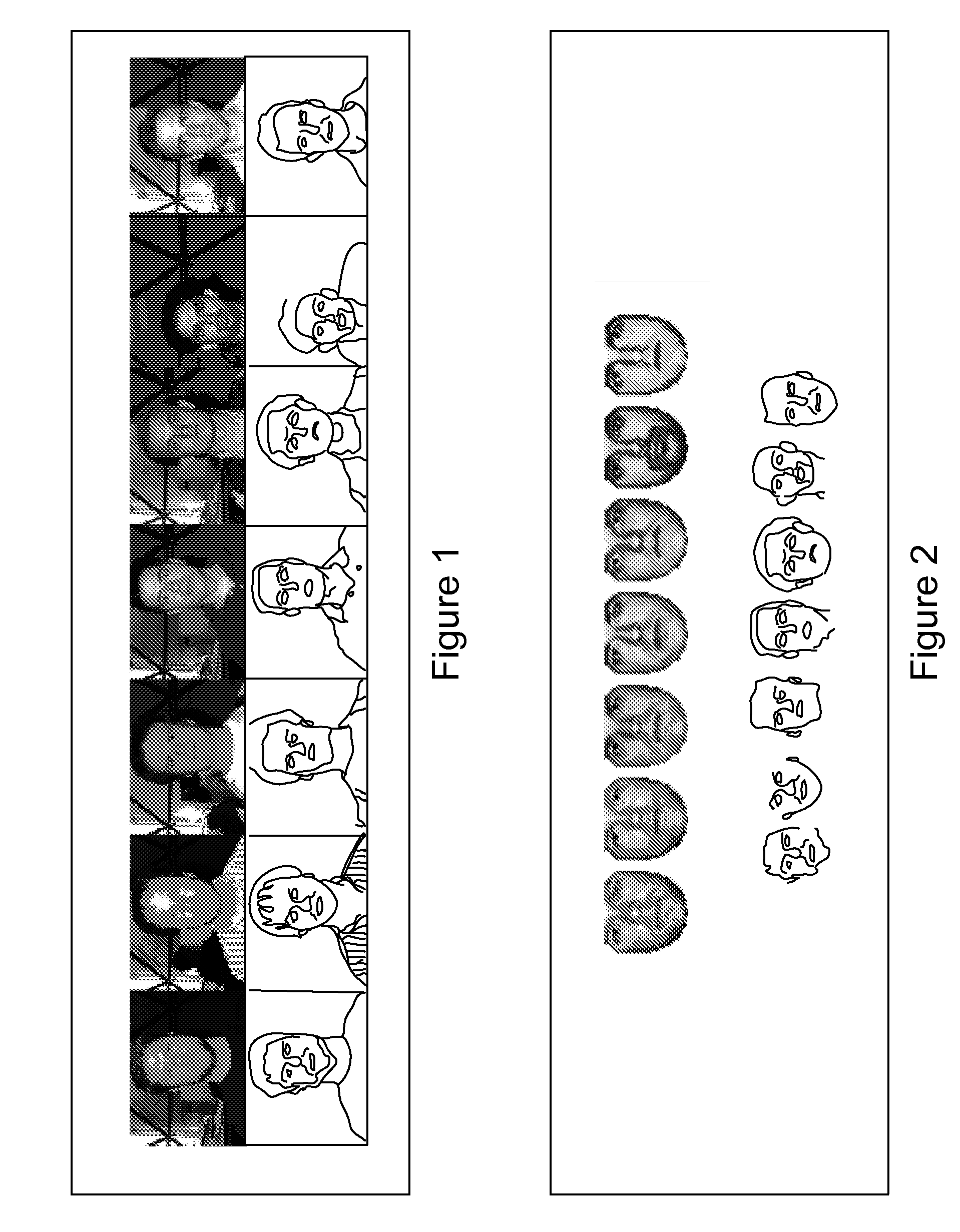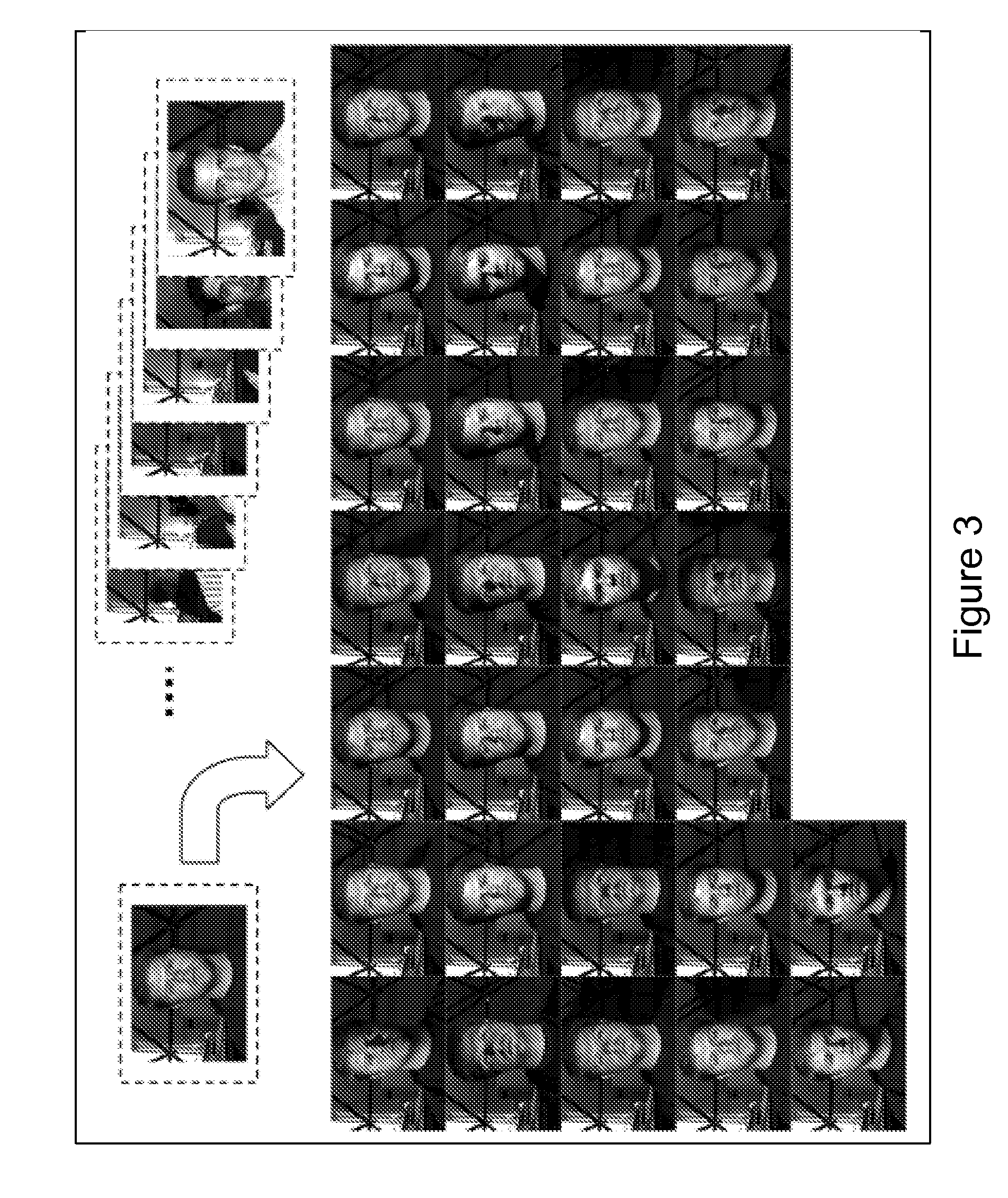Separating a Directional Lighting Variability In Statistical Face Modelling Based On Texture Space Decomposition
a texture space and variance technology, applied in the field of directional lighting variability in statistical face modelling based on texture space decomposition, can solve the problems of introducing non-valid space regions, unable to distinguish between various causes of face variability, both in shape and texture, and allowing the generation of non-realistic shape/texture configurations, etc., to achieve accurate reflection of lighting conditions
- Summary
- Abstract
- Description
- Claims
- Application Information
AI Technical Summary
Benefits of technology
Problems solved by technology
Method used
Image
Examples
Embodiment Construction
[0054]Techniques are provided below wherein a texture space is decomposed into two orthogonal subspaces, one of uniform illumination and the second for illumination variability. An advantage of this approach is that two separate sets of parameters are used to control variations between individuals and variations in illumination conditions. Another advantage is that an exhaustive image database for training the statistical model is not needed. Statistical appearance models are described briefly, as well as a method for separating directional lighting variation. It is also described how to fuse two separate texture models. Examples of how the model may be fit are also described below and some experimental results are presented.
[0055]A linear texture model is constructed wherein the model is decomposed into orthogonal subspaces, one of which describes the model variability to directional changes in lighting conditions. By employing such a model various applications of linear texture mo...
PUM
 Login to View More
Login to View More Abstract
Description
Claims
Application Information
 Login to View More
Login to View More - R&D
- Intellectual Property
- Life Sciences
- Materials
- Tech Scout
- Unparalleled Data Quality
- Higher Quality Content
- 60% Fewer Hallucinations
Browse by: Latest US Patents, China's latest patents, Technical Efficacy Thesaurus, Application Domain, Technology Topic, Popular Technical Reports.
© 2025 PatSnap. All rights reserved.Legal|Privacy policy|Modern Slavery Act Transparency Statement|Sitemap|About US| Contact US: help@patsnap.com



